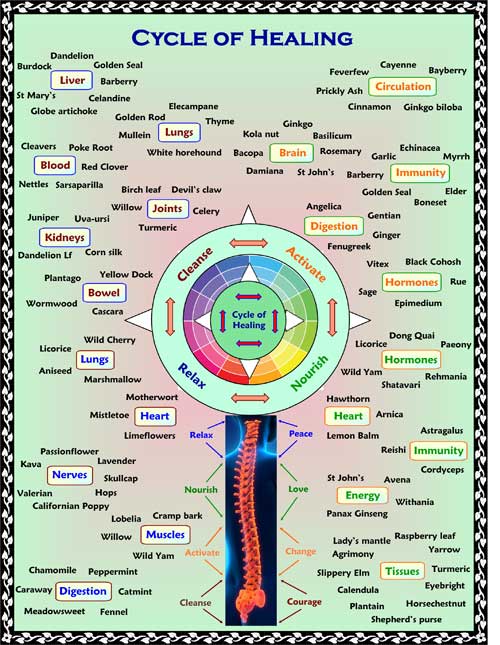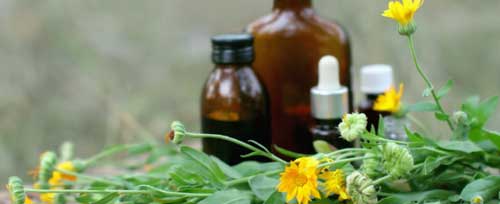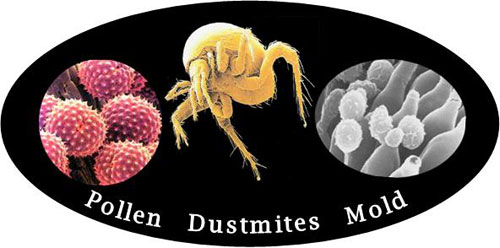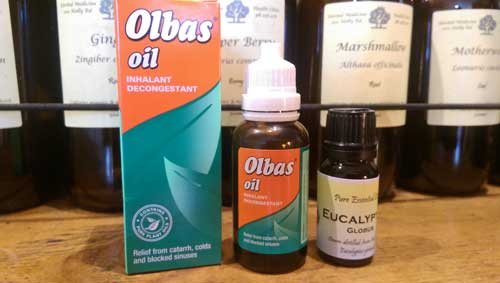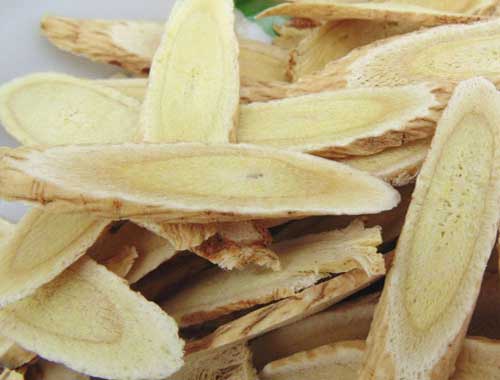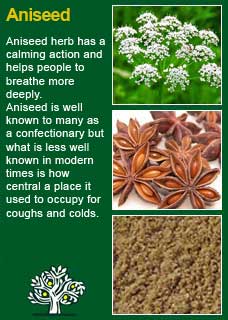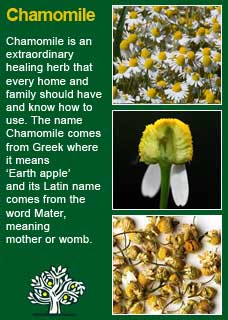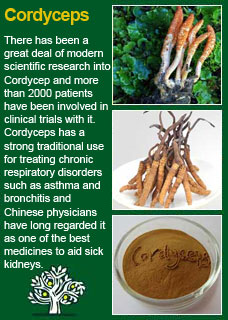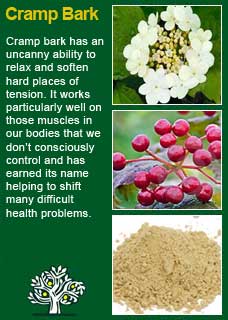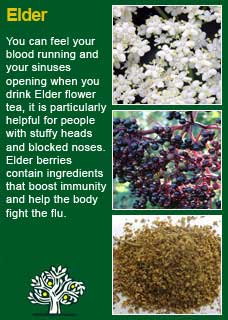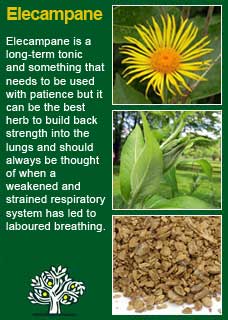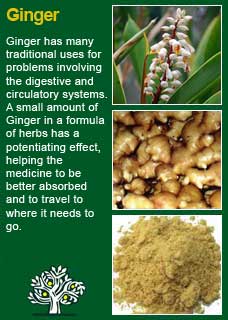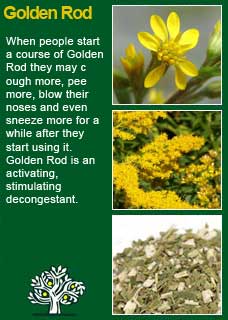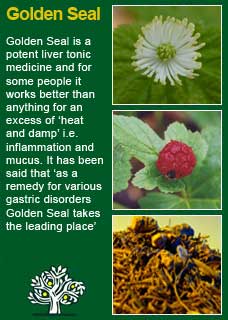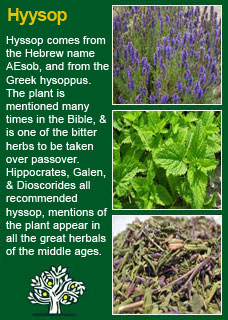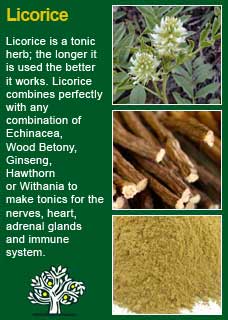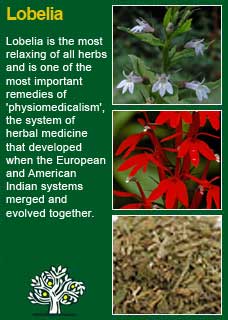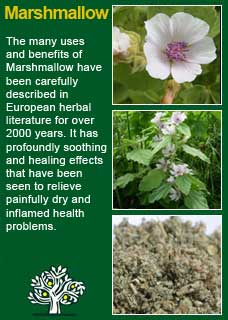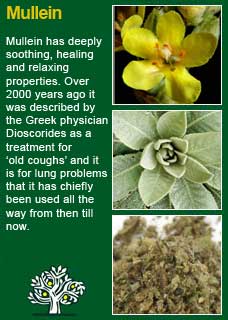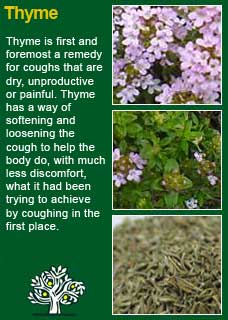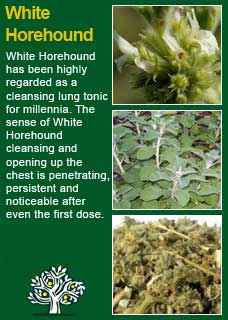
|
|
|
||
| Our Pages ABOUT CONSTITUTIONAL MEDICINE
|
The treatment of asthma with a natural approach takes time and commitment, but if the person is ready to put in the work then past experience suggests that it is highly likely they will get a great deal of benefit. As it is elsewhere, asthma is a serious and growing problem in Christchurch, New Zealand, where I have been in practice as a medical herbalist since 1989. No two people are the same, therefore each case is different and needs an individualised approach however, there are also some distinct patterns and common ground that lead to some general recommendations given further below. Firstly however, from the clinic files, the following cases histories are shown to illustrate some individual approaches to this serious and potentially debilitating condition.
Usually, when I think about case histories to share, my mind goes to patients that had particularly difficult conditions, or to people who needed more time and care than most. So, I probably wouldn't have thought of Henry, who I only met twice and was a very straightforward case, but for the fact that, at the same time of editing this article, I happened to meet with his wife for an appointment of her own, and she reminded me of Henry and updated me on his progress. Henry certainly did have very bad asthma though, and his case is worth recounting here. I first met Henry when he was in his late 30s. He'd had asthma since boyhood and was now using high doses of steroidal inhalers twice daily plus multiple doses of Ventolin as needed. Henry had severe eczema as a younger child that was also treated with steroids, and he had 'grown out of it' when he started developing asthma (a commonly observed pattern). He'd also had grommets put in his ears when young because of repeat ear infections. As it happens, Henry didn't come to see me for his asthma, he came to see me because he was feeling tired and run down and overly susceptible to colds and flus. However, with his history it was abundantly clear that he had 'atopic illness' and was thus almost certain to have some food intolerances. Given his fatigue and long-hours work-situation I thought it was impractical to ask him to do exclusion diets, so we did a blood test for food intolerances on his initial appointment and started on the following medicines.
We make our own tinctures from organic dried herbs, so it might be important that you understand that the optimal dose range will vary with different preparations made by different companies or practitioners, The above liquid extracts were combined into a formula to make 540mls. This will just fit in to a 500ml amber pharm round bottle and is enough to last 4 weeks if taken at the maximum safe and effective dose of 10mls twice a day, which is what we used. Henry was an Eagle constitution. He had very dry and constricted sounding lungs and said he often had a dry, unproductive cough. These herbs are some of the best in Nature to strengthen and gently cleanse the lungs whilst also providing a 'demulcent' soothing and nourishing action. Any of them can be read about in more depth in the Herbal A-Z found here Cordyceps capsules Dosage, two capsules twice daily. Cordyceps is a very weird, very potent but entirely safe fungi that helps to strengthen the lungs and immune system. Echinacea & Astragalus Capsules We import organic dried Echinacea angustifolia and Astragalus root, get them freshly milled and then send them to a local company to be processed into capsules. These are two of the best herbs in all of Nature to strengthen and support the immune system. The capsules are quite big, over 500mg of the two herbs combined in each one, and we used a high dose of 3 capsules, twice daily. Anyone who might benefit from learning more about the subject of food intolerance, and especially the important matter of accurate diagnosis in this area, can read the article here As mentioned earlier, for practical reasons I recommended blood testing from the outset for Henry. His test showed multiple strong reactions to dairy products, gluten, eggs, almonds & walnuts. All foods that Henry ate regularly and many, I have no doubt, had been adversely affecting his immune health since he was very young. Henry's 'work' was to strictly avoid all the foods that he showed reactions to. We discussed whether his partner would be 100% on board with this as it would be fiercely difficult to make a change of this magnitude without support. and he assured me that she most certainly would be... I only met Henry one more time, a month later. He told me that he was 'cured'. He had completely stopped all his asthma drugs, felt that best he ever had and said that 'this was the best thing he had ever done'. He expressed amazement that not one of the many people in the medical system that he or his family had been in contact with had ever suggested that his diet might be a part of the reason he had been constantly sick and on drugs for almost his entire life. My notes showed that Henry came and got one further repeat of his medicines which means he would have used them for about 3 months in total. All these comments are from his notes, it is several years since I last saw him, but his wife reported to me yesterday that he has been in excellent health all this time. She said that he has done plenty of experiments with his diet and finds that he can get away with small amounts of some things (gluten and nuts) and none at all of others (dairy and eggs) but that he is very well and happy.
This one is from long ago. I first met Adam when he was just 8 years old. His parents came in with him and they were obviously very concerned that he had been having so many problems including recently been officially diagnosed with asthma by their family GP. They were especially worried about the potential side-effects of the drugs that he had been prescribed and was expected to need to take every day for the foreseeable future. Adam had experienced some small outbreaks of eczema in the first two years of his life that were treated with hydrocortisone creams, but his main earlier troubles had been recurrent ear infections that had led to him taking multiple courses of antibiotics and eventually getting grommets surgically implanted when he was four. Since then he'd had a lot more colds and sore throats and then, in the last 2 years, had started to get serious chest infections. He parents were at or above average in height, but Adam was quite small and visibly underweight for his age. He frequently complained of stomach aches and was described as a 'fussy eater'. His chest and breathing sounded highly congested and 'rattly', his tongue was pale and heavily coated, and his pulse felt thin and agitated. We started with the following
These herbs are some of the best to help support the immune system and to strengthen and cleanse the lungs. The above liquid extracts were combined into a formula to make 210mls. This will easily fit in to a 200ml amber pharm round bottle and is enough to last approximately 3 weeks, if taken at the maximum safe and effective dose of 5mls twice a day, which is what we used. GI & Relaxing Teas Adam's parents were also given two herbal teas to start giving him with instructions to not force him to drink more than he wanted to and to just let him gradually get used to them. The GI tea was to help improve Adam's digestion and to relax his gut, which was very tense. This is a very pleasant tasting tea, especially with a little honey. There is more information about the recipe of three easily obtainable herbs, along with preparation instructions, found here The Relaxing tea is a little stronger tasting but still very palatable. It was for Adam to freely use as little or as much as he liked after school and towards the end of his day to help his nervous system and breathing to relax, more on it here The first step in healing is the one in which Nature can help us back to health. We come to a point where we need to ask for help and then these ancient allies, these herbs, are there to support and help us to get well. The first step for Adam was simply to let Nature in and take the prescription as shown above. The next step is what I call the 'work'. It is what the patient does to help themselves. Underlying all the old ways of healing is an understanding that living organisms have the innate ability to self-regulate and self-repair, unless something is obstructing that healing intelligence. The 'work' is usually about doing something that helps to remove the obstacles that are getting in the way. I don't know if this is true for everyone, but every person I have ever met who has had eczema and then asthma from early childhood has food intolerance as a central part of what's wrong. However, this is a challenging area to work in, people don't like change in general and especially don't like to change their diets. To make things worse, it is an often-observed pattern that the foods people crave the most are the exact foods that they are reactive to. There are some interesting theories involving 'endogenous opioids' and changes in our internal chemistry that go to explain why this might be, but that is not important to go into here. When asked about his food preferences, the stand-out foods that Adam liked the most and asked for the most were cheese, yoghurt, and other creamy or milk-containing foods. We set out to completely avoid all dairy products for the next few weeks and, only if he was not making an excellent response to the whole treatment was he to try having some again before the next appointment to see if they affected him adversely. However, if he was going well, he was to continue to avoid all dairy until we met again in 3 weeks. It may have been that there were other foods that Adam he was reacting to as well but, if you reduce enough of the allergic load, and at the same time build up the immune system, the situation may be able to be sufficiently turned around without having to avoid other food or environmental triggers in the picture. The other 'work' for both Adam and his parents was to do some massage over his back and the upper part of his belly, where his diaphragm was, at least 3 times a week, in the evening when he could relax afterwards too. I showed them some simple techniques to use and how, like everyone with asthma, Adam's upper and middle back and his breathing muscle, his diaphragm, had become very tight and tense. Massage would help him to relax the nerves and muscles that were affecting his breathing, plus it would help the great x-factor, love, to come into the picture. All good parents worry terribly about their children when they are unwell, if they can do something that will genuinely help, it lets them focus their care into a positive direction; everyone benefits. Adam responded extremely well and wonderfully quickly to the whole treatment. The reason I immediately thought of him to share as a case history is because, whilst it was many years ago that I first met him for asthma, since then I have had the great pleasure of seeing him grow into a fine young man who is now a strong and fit 22-year old! His parents sent him in for some other kinds of problems in his teenage years and then, in the last few years, he has come on his own volition to get support and talk about his feelings and his future. I am always happy to see him and so glad that all those years ago he was able to take charge of his health and get well.
Obviously, despite the difference in ages, there are many similarities in the two cases above. Both were Eagle constitutions (I will say something about that in the next section), both were rapid responders to herbs, and both had food allergy as a prime cause to their disordered immune health. I did want to therefore doubly demonstrate that the natural treatment of asthma can be that easy, but there are also many instances when it is much harder and more complex. So, the third case I have chosen to share is one of the much trickier ones. I will have to summarise many pages of notes or it will be too long here, but I can assure you that there are many such people as Charlotte in the world and, if you who are reading this are one of them, not to ever give up on your health because, one way or another, there is always a way to get better. Charlotte first came to see me as a young woman of 23 years old. She was doing an apprenticeship in the auto-electric trade, a male-dominated industry, but she had grown up around cars and was obviously very skilled at what she did. Unfortunately, her health was also in a terrible state. The notes show that she had been admitted to the respiratory ward in the public hospital no less than 5 times over the previous year. Each time for a stay of at least 3 days. She would get chest infections and her breathing would go into a state of crisis that no amount of drugs could alleviate so, fearing for her very life, she would either need to call an ambulance or be rushed there by her father, with whom she still lived. Charlotte had not experienced eczema or other obvious health problems in her childhood and had not developed asthma until she was at intermediate school, at about 11 years of age. She was from the Bear constitution and had also had problems with her digestive system from her early teens and had been diagnosed with irritable bowel syndrome (IBS) from the age of 16. She had a lot of troubles getting to sleep at night, especially when her breathing was bad and also experienced very painful and congested periods Needless to say, given the frequency of her hospital admissions she was on an extremely aggressive regimen of drugs. The final straw was being told that she needed to now take antibiotics every day for many months. She always felt rotten when she had to take antibiotics, plus they wreaked havoc on her bowel, so the thought of being on them forever sent her to that point where I meet many of my patients, when they are utterly desperate and ready to try anything. Partly why people leave it so long is that all the drugs and hospital visits etc. are fully tax-funded in New Zealand, and money really was an issue. Her father had health problems of his own and was only able to work part-time, she was struggling through her apprenticeship, which was lowly paid, plus she had to take a lot of time off work, though she said her boss was very understanding and was backing her to get through her apprenticeship despite all the time off. The formulae of tinctures and capsules etc. as shown above are significantly more expensive than using herbs in their raw, dried form. Great medicine can be conveyed very economically in the 'old-school' way of making potent teas from herbs, but the disadvantage is that they take a lot more time to prepare and they require a staunch commitment from the patient to drink large quantities of strong-tasting medicine each day. However, Charlotte was very motivated to do whatever it took so we used a treatment plan based on the following
Directions were to take approximately 12-14 grams of the above combined herbs (we showed her how much this was in tsps) and to place in a saucepan, pour over approximately a litre of boiling water, then cover and allow to steep overnight. Then, in the morning, bring to the boil, turn down to a simmer and keep on a low heat for approximately 10 minutes. Then take off the heat and add the following herbs
Directions were to take approximately 6-8 grams of these combined herbs (being leaves and seeds they were a lot bulkier for the weight and again we showed her about how much it would make in tsps) place the herbs in the decoction of the roots as had been prepared according to the directions above and then allow all of it to steep for a good 15 minutes before straining. She would have therefore decocted and infused approximately 20 grams of this strong tasting but extremely potent medicine that was then her dose for the day, preferably to be taken in 3 or 4 portions and no less than 2. As it happened, both Charlotte and her father were already well-read about the possible connections between diet and asthma. Plus, she had a tough history of digestive and bowel disturbances so, by the time I met her, she had already done a great deal of experimentation with her diet, including long patches of avoiding all the common food allergens, trying the fodmap diet, going 'paleo' for a while etc. Charlotte said that everything she tried seemed to have some benefit at first, but then she would always get sick again, only now she had less foods that she could eat because she found it very hard to reintroduce something once she had taken it out. I observed the patterns of tension in Charlotte's breathing, plus I closely examined her pulse, both gave me a strong impression that a large part of Charlotte's asthma may have originated in excess nervous tension. So, we had a careful discussion about how things first began. Charlotte's parents had divorced when she was 8 years old and then her mother had remarried and started a new family. There were many troubles in those years that eventually culminated in Charlotte moving in with her father when she went to high-school and only visiting with her mother on weekends. Those are some of the broad strokes of it, there is much more, becoming a teenager, some difficult experiences at school, the way she internalised her stress instead of finding a way to express it or talk about it. Any herbalist, throughout history and in the present, needs to be ready to be a dietician, an exercise coach and, equally, a counsellor. The mind is just as important as the body, not more, not less. To work holistically you must be ready to meet the patient wherever they are at on their journey and to have many potential tools that you can put their disposal and show them how to use. The first step is often the hardest in this kind of work, to change patterns that have been dug in over many years. Charlotte's work was, every day no matter how high or low she felt, to get in her car, drive to wherever she had to go, and open her mouth, her lungs and her heart and sing as loudly as she could. If she wanted to put on some music that would resonate with how she felt and that she could sing along to then great, if she wanted to just have a yell then that was ok too. But she had to make some noise, for as long as she could on the exhale, then a deep and quick breath in, and again a long, sustained and, preferably loud amount of noise on the exhale. Repeat the process for at least a few minutes, every day. That was her prescription. I hope this unusual advice is giving you, the reader, along with any understandable perplexity, at least a hint of a smile. There are one of two things that I often get my patients with long-established poor breathing habits to do; sing or swim. Both require the person to take a quick deep in-breath and then sustain a long exhalation whilst they make some physical effort. People with asthma are terrible at not exhaling fully or properly. They have stale air sitting in their lungs all the time, creating tension, congestion and irritation. They instinctively want to breathe in more, so their emphasis is always on the inhale, but they need to properly empty out before they can take a good deep breath, and hardly any of them do. The other aspect to the singing, or in Charlotte's case, possibly shouting, is that she had so much emotion held in her body and hardly any practice at letting it out. She was not the kind of person who would naturally want to talk a lot about her problems, but she was holding all that tension all the same and, like everything, it was definitely going to be better out than in. I think this is enough to give you a sense of her case and the approach we used to help. There are many more pages in her notes describing the different herbs we used and the different steps we took to help her get into a better place in her health, both physically and mentally. Charlotte did need to open up and talk about things, especially around the time she started to get sick. She ended up writing a heartfelt letter to her mother about what had happened and how she felt about it but never said at the time, and she sent it to her too (the mother had moved to Australia to live when Charlotte was 15). This difficult but necessary 'work' bought about a major breakthrough in her progress. She never needed to go back to hospital once after starting treatment, but it took her nearly a year to get off her steroidal drugs and she would still need to take Ventolin on occasion if the air got too cold or she got too tired and stressed. We used the dried-herb decoctions and infusions for a while and then shifted into using tinctures and capsules, including some of the approaches used in the detailed article on IBS found here I first met her about 6 years ago, she is is nearly 30 years old now and, at the time of writing this, working full-time on cars and getting paid well. She still closely looks after her dad but is living in with her boyfriend in what is her first really serious relationship. The last time I saw her, my notes say that they are talking about getting a house of their own and getting married, all that. I remember that when I first met her she talked just above a whisper, but when I last saw her she had grown into a woman with a strong confident voice and I remember her telling me her boyfriend is getting used to her belting out songs in the car and that she is sure he secretly likes it...
I mentioned above that Henry and Adam were Eagle constitutions and that Charlotte was a Bear. This ancient way of understanding our differences, according to how we are naturally either hotter or cooler, and at the same time dryer or damper, underpins much of the understanding and approach of what kinds of foods, herbs etc, will best help a person. Anyone can get asthma and each person needs an individualised approach. That said, it may be helpful to share some observable patterns. For example, it is notable how the dryer constitutions are more prone to environmental allergies and likewise how they tend more towards problems with constriction in their airways. Damper constitutions may also be allergic to things in their environment but food is often a big part of the allergy picture, they also naturally tend towards excess mucus in their airways along with all the congestion and vulnerability to infection this can bring. In any case, this old way of understanding our differences is of great practical benefit in treating something as complex and chronic as asthma and there will likely be much benefit, if you, or someone you care for, are having troubles in this area, to learn more about the general subject of the constitutions starting here, and then working out which constitution you or they are by going here
After getting a sense of whether a person is naturally cooler or hotter, dryer or damper, the next level of knowledge to take the kind of personal approach that can be essential to a great result is to look into the healing cycle. This is a fascinating subject in itself and understanding it can give great insight into what needs to be done to treat the cause and help healing happen naturally. There are four stages in the cycle; cleansing, activation, nourishment and rest. Before I put the link for anyone who wants to learn more, I want to say that I fully recognise that many people are not ready to take the kinds of steps you see being talked about in the case histories above or in the general recommendations below. They would rather use prescription drugs and get on with their lives with as little disturbance to their habits as possible. Yes, probably, if there are underlying issues that aren't being dealt with, there will be further trouble to come, but none of us are getting out of this alive no matter what we do and I deeply believe that people should choose their own paths as much as they possibly can. So, these old ways are not for everyone but, that said, I can also say that, if a person is ready to let Nature in and work on the causes of what's stopping them get well, then it can be seen that they can get better from just about anything. To learn more about the cycle of healing read here
I trust that you will understand that the holistic treatment of asthma requires an individualised approach that works alongside the person wherever they are at and, as mentioned at the beginning, if your condition is very bad or you know you need some guidance in person, then I hope you will be able to find a good herbalist who will get involved and guide you to getting and doing whatever you need to get well. However, it also may be that the condition is not so severe, or even that it is but you just don't have the option of working with a holistic practitioner. In these instances, I want to share some general suggestions, starting with some reliably effective medicines from Nature, that are both safe and highly likely to help anyone that uses them patiently and correctly.
I can hardly imagine treating a person with asthma, or for that matter any kind of illness or weakness in their lungs, without these two herbs, Elecampane and Licorice root. Elecampane Elecampane has a remarkably strengthening effect on the lungs. No-one knows how it works and it probably doesn't matter. It's provides no kind of quick fix so there won't be any interest in trying to isolate a chemical drug from it to use in pharmacy. I learned about Elecampane's reputation to slowly but surely build a tonic action in the respiratory system from its traditional, historical record and so began using it on the basis of other's recommendations. However, having now given it to many people and having been in the practice of making an electronic recording of people's hearts and lungs for many years with an electronic stethoscope and so being able to carefully assess before and after records, I can say from my own experience that I am 100% certain that it really does help to build strength in the lungs. To learn more about it read here Licorice Licorice is a famous herb in all herbal traditions and it has a wide range of actions that see it being helpful for all kinds of conditions. The only time one might need to be careful about its use is when the person has high blood pressure, but this rarely seems to be an issue for asthmatics. Licorice soothes inflammation whilst having a gentle cleansing, expectorant action on the lungs, more about it here There are many other great herbs that have the potential to help a person with asthma. A few examples are herbs such as White Horehound and Mullein, both excellent 'expectorants' to help improve cleansing from the lungs. Thyme and Aniseed open the breathing and help clear infections. Lobelia, once called asthma-weed, is a fast-acting medicine to open the airways that can be very powerful if used with care. Both Elder berry and Elder flower have many benefits to the lungs and immunity... There are many more too, but it never a matter of trying to take everything that might help. Herbal medicine is an ancient art, even just using one herb in the right way in the right dose can have a dramatic effect. The key point, if you will use these old ways, is to find at least one way to let Nature in, carefully and patiently. The action of the herbs will be nothing like what you have experienced from using drugs. The effects will be much subtler, and accumulative. You will probably have to take them 'on faith' to begin with but be patient with them, let them in, and you will see for yourself why these remedies have been revered for thousands of years and carefully passed down from one generation to the next. We keep using them for no other reason than that they work.
As you will have gathered from my comments in the case histories, undiagnosed food allergies and intolerances are, in my own, and many other experienced practitioner's views, usually deeply involved in chronic asthma to at least some degree but 'how much of a problem is it?' and 'what exactly is it?' are tricky questions to answer. The only way to truly answer the 'how much of a problem is it' question is to take out the suspected substances and see how much things improve. If a person has a history of asthma or eczema going back into childhood, then this may be one of the most important areas you can work with. In such 'early-onset' cases, making the correct changes to the diet may result in dramatic improvements over time. Working out 'what exactly is it?' when it comes to food allergy and intolerance is one of the most treacherously confusing areas to delve into in the health world because there are so many conflicting opinions as well as many highly dubious methods of testing for food allergies or intolerances! That said, just because it's hard doesn't mean it should be seen as too hard. This work requires time and effort but if it helps a person to breathe easy and live normally then any amount of trouble will be worth it. Without seeing you in person, the following pointers and suggestions are to help as much as possible ... if you or your child have had rapid allergic reactions to foods that have affected your breathing then you almost certainly have classical food allergies. You may be able to get a clearer idea of what you are reactive to by doing some conventional skin-prick or IgE blood tests however, if these are unavailable or seem inconsistent in their results, then you may be wise to exclude a certain group of foods for at least one week and then carefully re-introduce each of them one at a time to see if any of them make any difference to your overall health and breathing. Virtually any food has the potential to be regarded as an invader by the immune system but, in order of most frequent to least, the list of what foods cause the most immediate reactions are as follows:
If you or your child do not seem to have any rapid reactions to foods, there is still every possibility that you or they are experiencing delayed reactions to foods that are being mediated by a different part of the immune system (chiefly IgG white blood cells). This is called food intolerance, as distinct from food allergy. Food intolerances are much harder to diagnose and consequently they are frequently missed, even when they are a known major contributor to such allergic-based diseases as asthma and eczema. If there is any reason to suspect food intolerance, and if you or your child have asthma then it certainly should be suspected, it may be recommended to go through the following steps:
Note: If one or both dairy and/or gluten are found to be an issue, then stop there and give at least one month but no more than three months, to see what kind of difference it makes to completely remove them from the diet. The longer a person avoids the foods they are reactive to, the better they usually get. However, if neither dairy or gluten show any obvious signs of reactivity, or if they have done and the person has avoided them for a good amount of time but not made any significant clinical gains, then the next step in this area may be to do some bona fide IgG blood testing with a reputable laboratory or home-detective kit. Further information about this, along with a more detailed discussion on food allergy and intolerance is found here.
The subject of allergy is a complex one, and more than one kind of reaction is likely to be happening with more than one kind of substance. Allergic complexity is like a bucket that, when it overflows, equals asthmatic symptoms. There is always more than one ingredient that fills that bucket and, whilst you can't stop everything that goes into it, you can usually remove at least some of it. Food can be the best place to start to reduce the allergic load because it is so much easier to control what we eat compared to what we breathe. That said, it is also highly possible that there are air-borne environmental triggers that it may be of much value to try to address in some of the ways described below. The main culprits are animal dander, mould and dust-mite and, with all of these, it can be best to focus on the air of the bedroom environment because, whilst it is a lot harder to change the air we breathe during the day, we can make a big difference to the air we breathe at night, which also just so happens to be the time that our immune systems are at their most active and reactive anyway.
This is very hard advice for some people but, because animal dander is such a major source of air-borne allergy, at least as a trial to see what difference it makes, the bedroom must be a dog or cat free-zone, day and night, for at least 2 weeks. If things improve, but then worsen as soon as the dog or cat come back in, they must continue to be kept out. If you read the article on food intolerance linked above, you will see a section at the end called 'can food intolerance be cured?' It goes into the process of having a complete exclusion for 3 months and then carefully re-introducing the foods back in to re-establish tolerance. Reactions to animal dander reactions can work the same way. However, I have had cases where the person was doing everything right but only making minimal progress and, when asked about if they still had their cat or dog in the bedroom, embarrassedly say 'yes'. Then, when they changed this one thing, everything came right. It can really have a very big effect Mould spores especially come out at night and are a second major cause of allergy in the bedroom environment. Even if you do not see any obvious patches of mould anywhere in your bedroom they may still be there, just invisible to the eye. What follows will, no doubt, seem like strange advice from a nature-loving herbalist but if the house is old, or in any way damp, and so if there is any possibility of mould in the bedroom, one of the first things you must do is to bleach your bedroom! Bleach, in whatever form you use it, is the deadliest method to destroy mould and fungi and you should not be shy in using plenty of it to rid your bedroom of every trace of organisms that may be threatening your ability to breathe! As early in the day as you can, so there is plenty of time to for the smell to clear before bed-time, put a mask on, open all the windows, and clean everything, the walls, the ceiling, behind the bed and any other furniture as best as you can, be ruthless, kill any mould or fungi that might be lurking, visible or not. How often a person suffering from asthma should have to repeat this kind of deep-cleaning, mould eradication, entirely depends on their climate along with the amount of sun, age and humidity vs. dryness of their home. As a rough guide, once every 3 months as a safe average for people living in temperate zones, less in colder, dryer regions, maybe more often if you live in a warm, damp environment, or an older, damper house. Dust-mite is now well recognised as a major issue for the health of many people, especially those suffering allergic asthma. In New Zealand and other countries, the incidence of asthma before the widespread uptake of carpets within residential homes in the 1970s was a fraction of what it is today. There are other compelling theories about this, such as the hygiene hypotheses but, even if carpet is only a contributing factor, do not underestimate the power of the droppings of the tiny dust-mite to cause or contribute to asthma! If you have carpet in your bedroom, this will likely be a major source of any dust-mites that come out at night and fill up your allergy bucket. In this case:
I want to say something about essential oils here because they have the potential to make such a positive difference, especially in the bedroom environment. I also realise that some people with asthma become somewhat paranoid about the aromas of plants because they have associated flowering plants, and pollens, with getting worse. However, essential oils do not contain pollen and they can be of great benefit to a person with any kind of breathing problem because, as well as making the air smell more pleasant, they simultaneously bind to and render harmless airborne particles and pollutants. One of the simplest and most effective ways of utilising essential oils in this way is to fill some kind of spray bottle with water and some drops of essential oils (e.g. 10-20 drops of oils to 100mls of water) and simply regularly spray this into your environment. Another popular way is to use an oil-burner, the advantage of that method being that it will disperse the oils into the atmosphere in a more gradual manner. Essential oil burners and the candles that keep them going are readily available online and elsewhere. A few essential oils that may be especially beneficial to breathing are listed below but in this area people should remember to 'follow their nose'. The ones you instinctively like the smell of the most are the ones that are most likely to help.
This is not going to be an issue for everyone with asthma but chronic infections, especially in the sinuses, can cause a chain reaction of inflammation with subsequent constriction that can reach all the way down into the lungs and bronchial tubes. If you are prone to sinus infections, or you get a lot of blocked-up mucus in your nose, then you may be wise to patiently work with one or both of the following to turn things around If you do an online search for 'neti pots' you should be easily and inexpensively able to get the required device for this ancient and effective method to clean the passageways. The concept of nasal douching, i.e. putting warm salt water up one side of your nose, so it goes up through your sinus passageways and then comes out the other nostril is, of-course, completely off-putting, until you actually just do it, whereupon you realise that a) it doesn't hurt and b) it's very easy to do Secondly, consider doing medicated steams to clean the airways. The warm, moist air of the steam gets everywhere it needs to go whilst the essential oils in the steam help to break down the 'biofilms' that can make for extremely resistant infections. 'Olbas oil', pictured below, is good for this, as is Eucalyptus oil. The simple technique for this process is easy to do and described further here
If a person with asthma knows that they have a chronic infection, e.g. from getting a laboratory culture done from a sputum sample, or they are obviously getting recurrent acute infections, then there can be no doubt that their immune system will need support. If so, start with herbs. Another highly reliable immune tonic is Astragalus, from Traditional Chinese Medicine, more here, and a third is the unique mushroom medicine called Cordyceps, excellent for strengthening the lungs and the immune system, more here Sometimes, a vital step to turn around a weakened immunity is to get the vitamin D levels right up. In an ideal world, everyone with asthma would have at least one blood test to check their levels of this crucial, immune-moderating vitamin but it is an expensive test and not always readily available. If a person has asthma and a low immunity, plus they have not been getting good amounts of mid-day sunlight, it may be helpful, and it would be safe, to give a course of Vitamin D for 2 or 3 months at a dose range of around 10-20 thousand ius per day. Those are some key points, there is more detail in an article on immunity here, in which you will see a lot of cross-overs to this work.
For many people, the greatest challenge from their asthma is in how it adversely effects their ability to move and exercise and It's noticeable, when many people are getting good results, that it is this aspect of their lives that they will point to as the measure that they are getting better. Movement and exercise are essential to the health of all living things. How much and what kind is a very individual matter, but sometimes the best place to start is by working on the breath itself. Many people find that they can improve their asthma by working on their breathing. There are a variety of different techniques, the Buteyko method being one very good example, but the key common points are to get the diaphragm moving and to fully exhale. Anyone can find some songs they like, learn the words and sing-along with, making sure they hold the long notes. Likewise, any amount of swimming with your head down, fully exhaling the air before you come up for an in-breath, will correct the shallow breathing, it doesn't matter how small the start so long as you begin somewhere. Of course, it's understood that singing or swimming is not for everyone, that's ok, any kind of movement will help your body to oxygenate your blood and strengthen your heart and lungs. If you can exercise to the point that your heart is pumping harder, which you can know is happening if you must breathe deeper and faster to keep up with it, then you are on the right track.
It seems to be universal that all people with asthma get the 'too-stiff' diaphragm as mentioned above and, at the same time, also get a characteristic tightness in the thoracic region of their middle and upper back. Massage was just as much our 'first medicine' as herbs were. Ideally, someone you live with and who cares about you can learn how to work on your diaphragm and upper back. There are many ways, including online resources, to learn simple and effective techniques to release tension but, however you do it, the key to great massage is feedback. You must talk because only you can feel what you feel and so only you can say things like "up a bit, down a bit, go to the left, go to the right, go a little harder, no do it a bit softer, go slower, go faster, go deeper, make it less pointy, make it more pointed, yes right there!" etc. etc. until they are getting it just exactly right. By the way, when they are doing it just right, you must let them know that too. For example, even quietly simply going "mmmmm" a few times as you breathe out is as easy as breathing itself and will tell them that they are doing great. When you give feedback, you will see that the whole process takes a fraction of the time that it would otherwise and making it easy and effective means it is possible to repeat as needed. Of course, it may simply not be possible to get physical treatment from someone near to you, in which case it is still highly recommended to visit with a skilled and experienced physical therapist to get treatment on your back and, if possible, to help release constriction in your diaphragm. A good sign that you have found the right person is that they will also want to give you some tips or exercises to help you keep your back and breathing apparatus open and relaxed, in other words they will be trying to do themselves out of a job by helping you to get better enough not to need to come back!
Anyone who has not experienced what it is like to have trouble with their breathing may also have trouble understanding just how much tension and anxiety asthma can create. A reduced capacity to breathe may not cause the outright panic of not being able to breathe at all but it will always create at least some residual tension in its wake. This residual tension becomes particularly difficult because an increase in tension causes an increased tendency for the bronchial tubes to tighten up. In other words, asthma causes increased anxiety and tension and increased anxiety and tension causes the asthma to get worse... You are the best person to know for yourself or you child whether this is a minor side-issue or whether it should be given a high treatment priority. If it is important, then do not expect too much help from pharmaceutical mind-altering medicines, everything has its place, but these drugs are not seen to help people get well in the long term. There are other ways, old ways, and this important subject is written up in detail in the article on anxiety here
Please understand that I cannot personally advise you without seeing you in my clinic. |
|
|
© 2011 R.J.Whelan Ltd


